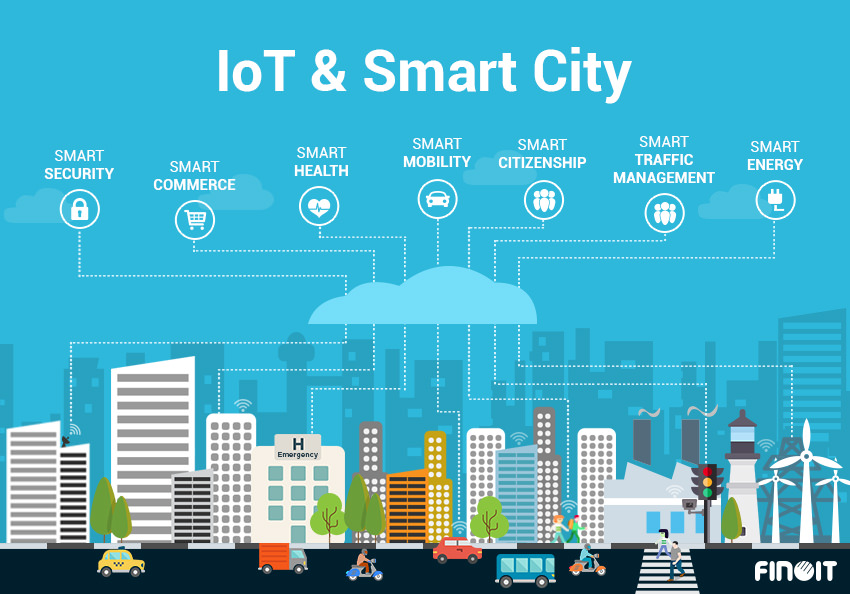RIO DE JANEIRO, BRAZIL – Brazil’s Ministry of Justice (MJ) has recently provided states with what it has termed “Big Data tools for fighting crime”. The system receives and cross-checks data from cities across the country to identify potential suspicious behaviors and steer policing actions by state government corporations. Data will be produced from monitoring using a variety of devices, such as cameras scattered across thousands of cities, vehicles and even the electronic ankle monitors of convicted offenders.

The initiative is one of the most notable examples of what has been called smart cities. To employ such technologies, an ecosystem of connected devices is required, collecting data and engaging with each other in what has come to be called the Internet of Things (IoT). This new set of technical solutions has been growing and drawing attention from authorities, with applications in a variety of areas, from the countryside to city centers.
The MJ system is an example of the adoption of this type of technology aimed at public safety. Through it, the police will be allowed to map crime occurrences by area, day and time, monitor streets and public spaces in real-time through cameras and seek information about individuals and vehicles using databases from different locations (identifying, for instance, a person in a city that is a fugitive from another state).
“From the data history, we can trace patterns of criminal occurrences. Crime occurs in patterns and by identifying the pattern, repression becomes more efficient. After four years, we intend to reach the state-of-the-art that is to come and from this data and the use of more elaborate algorithms we can predict, recommend and prescribe actions”, explained the Director of Information Management and Integration of the National Secretariat of Public Security (SENASP), Wellington Porcino, during a presentation of the initiative in an event on technology and security.
The program was inspired by a project of the Public Safety Secretariat of the government of Ceará, which will use cameras spread throughout the state to assist with policing. But elsewhere, monitoring initiatives are multiplying. In Rio de Janeiro, facial recognition technology was installed early this year as a test during Carnaval and later in other parts of the city. In July, a woman was arrested by mistake after the system identified her as a fugitive.

According to Ricardo Moura, a researcher at the Laboratory for the Study of Violence at the Federal University of Ceará (UFC), the project has been effective in fighting crimes involving mobility, such as vehicle theft, but it still raises issues regarding the management of collected data on citizens.
“We have not yet seen any movement on the discussion of the issue of privacy and the use of personal data. We need to introduce this discussion because, in fact, you are scanning the population and you need to know how and by whom this will be managed, processed, stored and accessed. It is still a gold mine and we know that many companies are based on information,” he says.
In Bahia, the state government has already implemented facial recognition and disclosed that by August over 50 people had been arrested with the help of this tool. “The warning issued by the system and the swift and effective deployment of police forces have guaranteed excellent results and removed criminals from society,” says Maurício Teles Barbosa, the state secretary of public safety.
Public services
The technologies of the so-called Internet of Things are also present in other types of public services in cities. This is the case for water and electricity supply. Sensors are installed to check flows and if there were any problems. “A circuit breaker collapses on a street because it was overloaded or because of lightning and that is reset by a system that is trying to detect the cause,” exemplifies Pietro Dalai, program manager for Latin America at the global consulting firm IDC. Another growing use, he says, is the adoption of solar panels and the transfer of part of the energy generated to the public grid, getting energy back.

IBM is developing intelligent lighting systems involving devices in homes and stores. These systems assess energy demands, lamp capacity, and replacement needs. According to the company’s Internet of Things for Latin America executive, Carlos Tunes, one of the ways of managing the electricity grid is “based on the movement of people”. The company is also working on the development of connected cars. “We are able to monitor and track the condition of a car to find out when it is going to malfunction,” says Tunes.
CPQD, a center specialized in technological development, has set up a pilot project in partnership with the city government of Campinas and with funding from the National Bank for Economic and Social Development (BNDES), combining the monitoring of cameras and improvement of public administration actions. Through data integration on several activities, it is possible to provide cross-referenced information that helps the performance of services.
“You can have the data embedded in a common platform. These records can be used by a transport company so that it knows where traffic is most congested and better organize the flow. In addition, the transport company may also advise those in charge of garbage collection, recommending where waste should be collected and where it should not,” explains Paulo Curado, CPQD’s director of innovation.
The National Telecommunications Institute (INATEL) is also conducting a pilot project with the support of BNDES, focused on an issue in the cities of Santa Rita do Sapucaí and Caxambu, both in Minas Gerais; and Piraí in Rio de Janeiro. The aim was to reduce the costs of municipal public management, such as lighting and fuel use by the city’s fleet.

“We will be able to provide people with information on when the bus will be near its stop. In the case of ambulances, we will have an inter-city coordination in the region. The car will leave one municipality and pick up patients in another, taking turns with ambulances. The system will coordinate this exchange and provide ways to avoid losses,” says Fred Trindade, the institute’s coordinator for smart cities.
Social impacts
Luã Fergus, the researcher on smart cities at the Getúlio Vargas Foundation’s (FGV) Center for Technology and Society in Rio de Janeiro, recalls that the use of technical solutions by municipal administrations is not new, such as the difference in the choice of the term smart cities for a more propagandistic nature. In Brazil, adds Fergus, this initiative is still highly focused in the South and Southeast, with an emphasis in Curitiba with policies for the implementation of technology parks, incubators, and tax exemption mechanisms.
However, the researcher considers that, despite the growth of these initiatives, there is still little attention to the social impact of the massive use of data and the significance of safeguarding the rights of individuals. There is still little openness by administrations to the involvement of the social sectors impacted by these changes.
“Ignorance on social impact is also due to the marketing rhetoric that involves smart cities, since many of these initiatives are driven by private companies that have a close relationship with public administrations, thus directing the political priorities of technology projects. Those most affected by these technologies – such as blacks, women, and youths – are obscured from the areas of discussion and decision-making, which is controlled by white men from wealthy regions of the country,” says Fergus.

